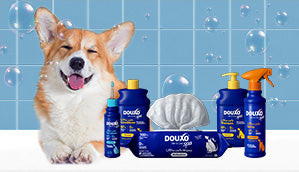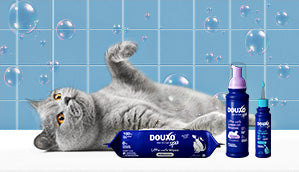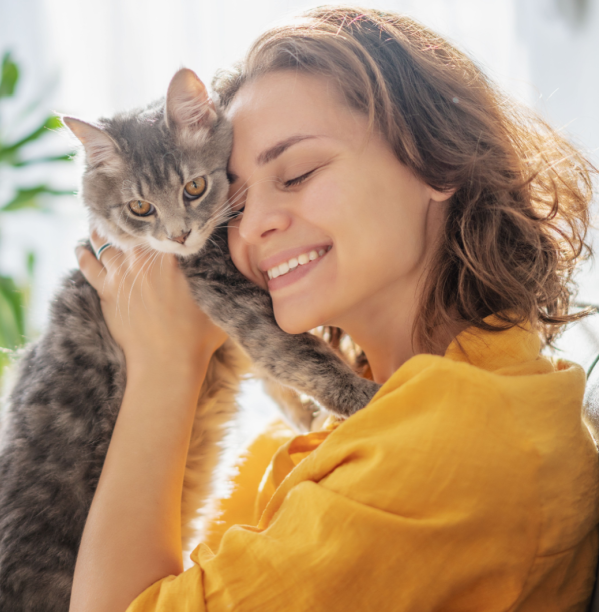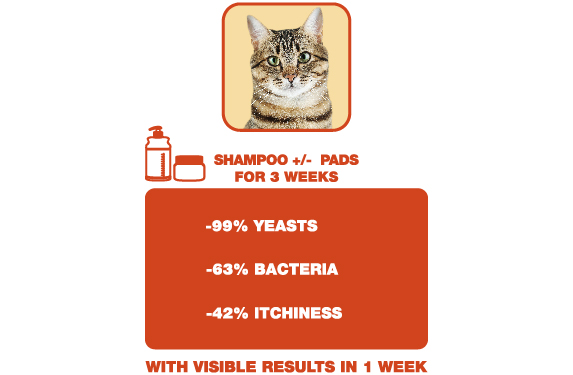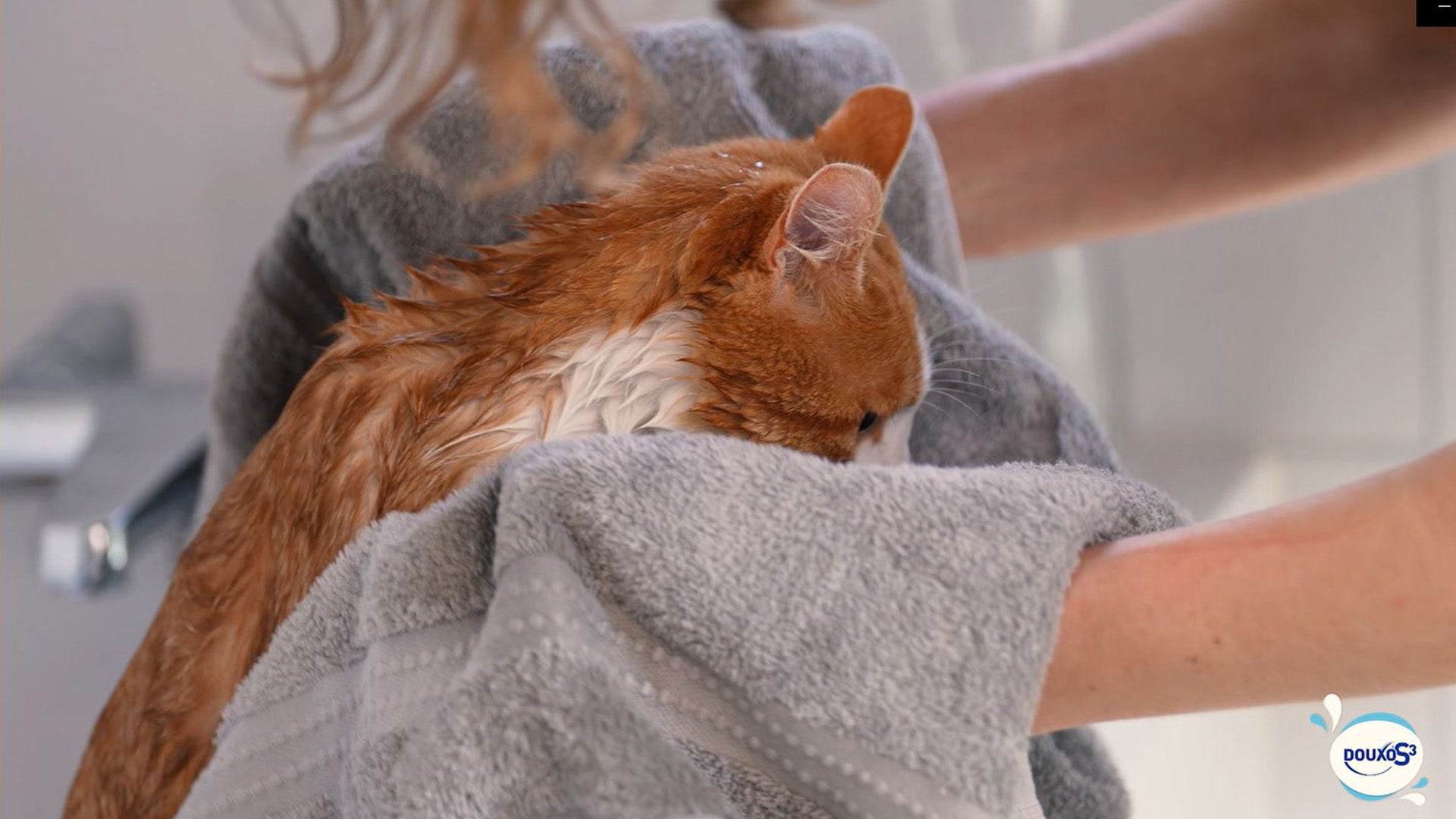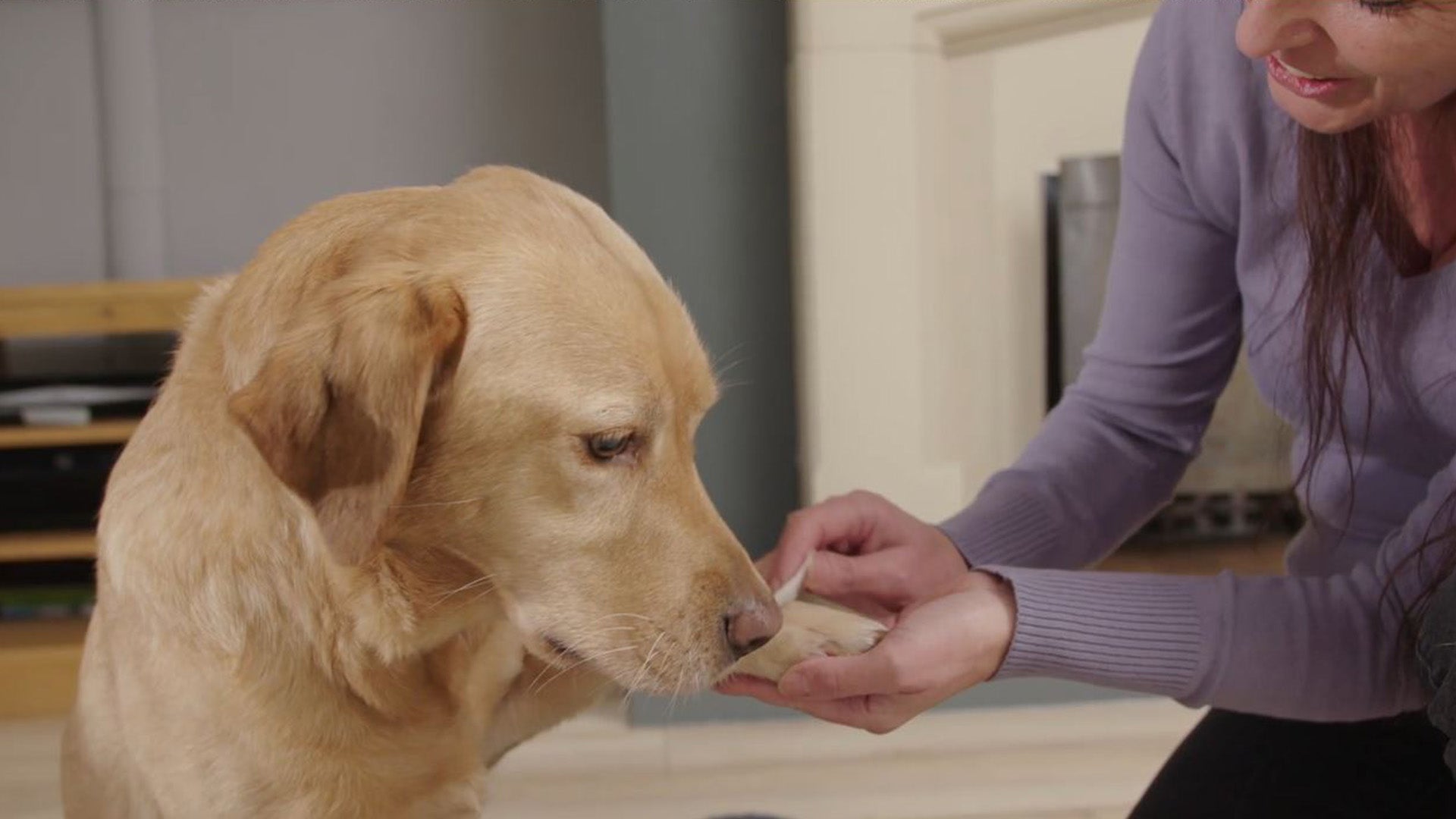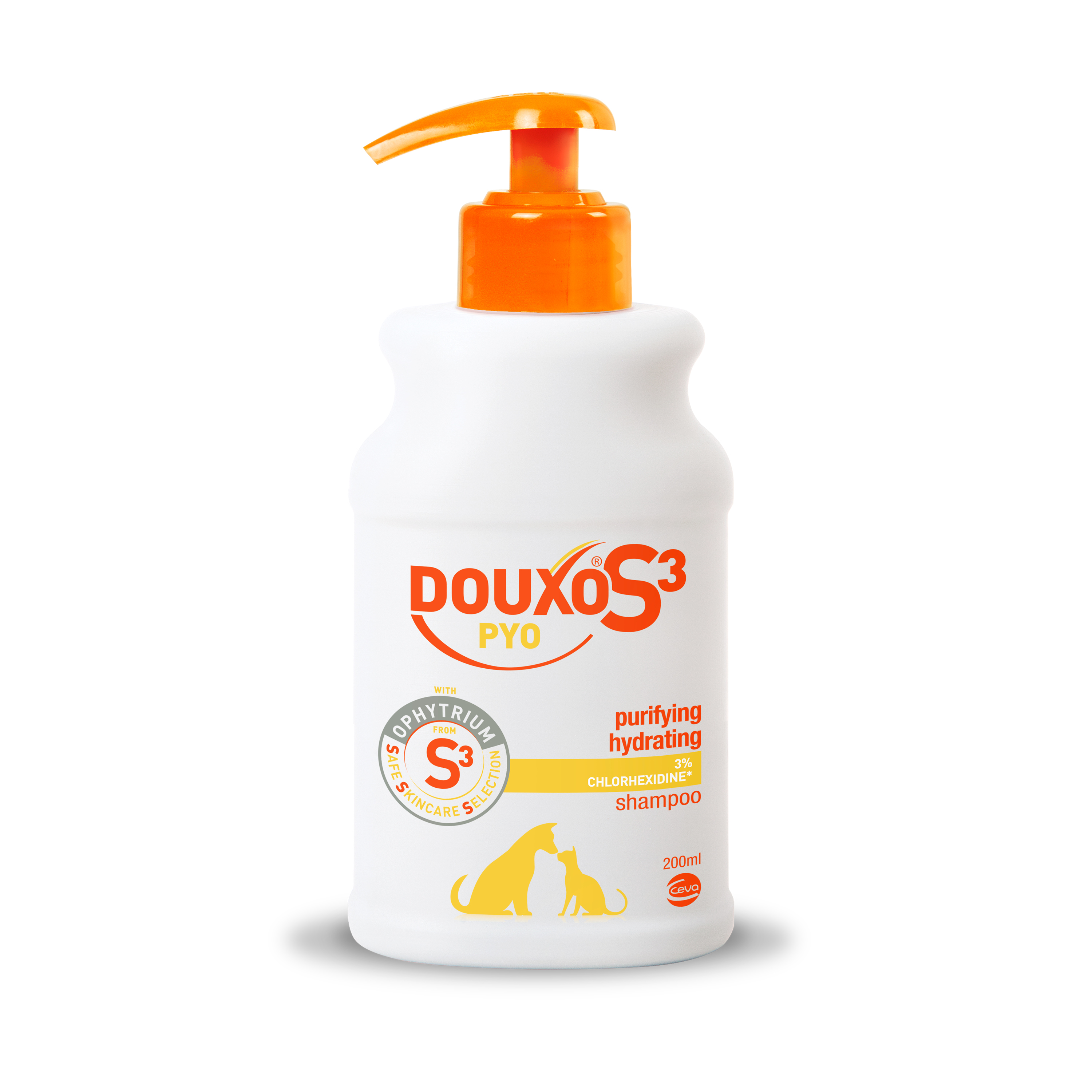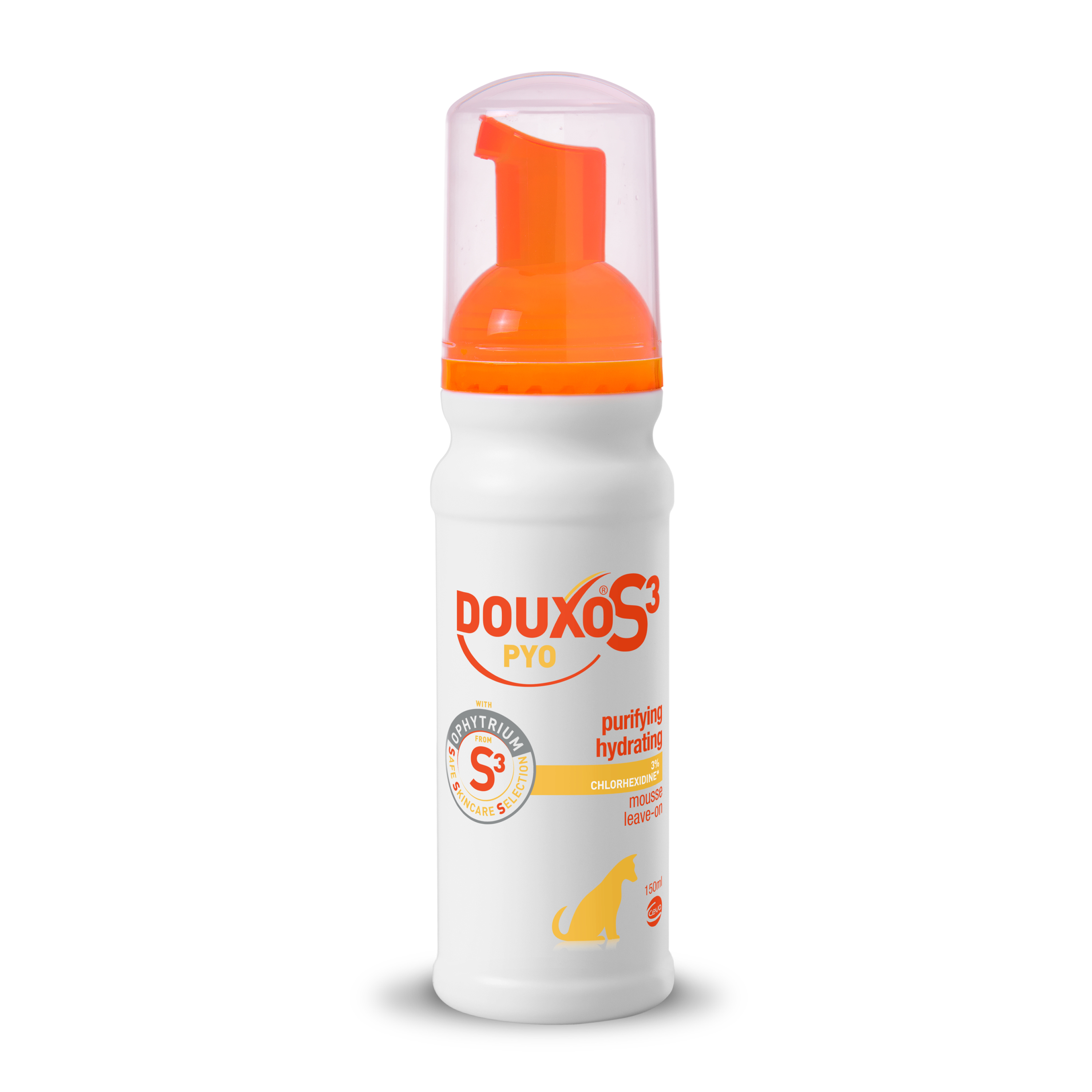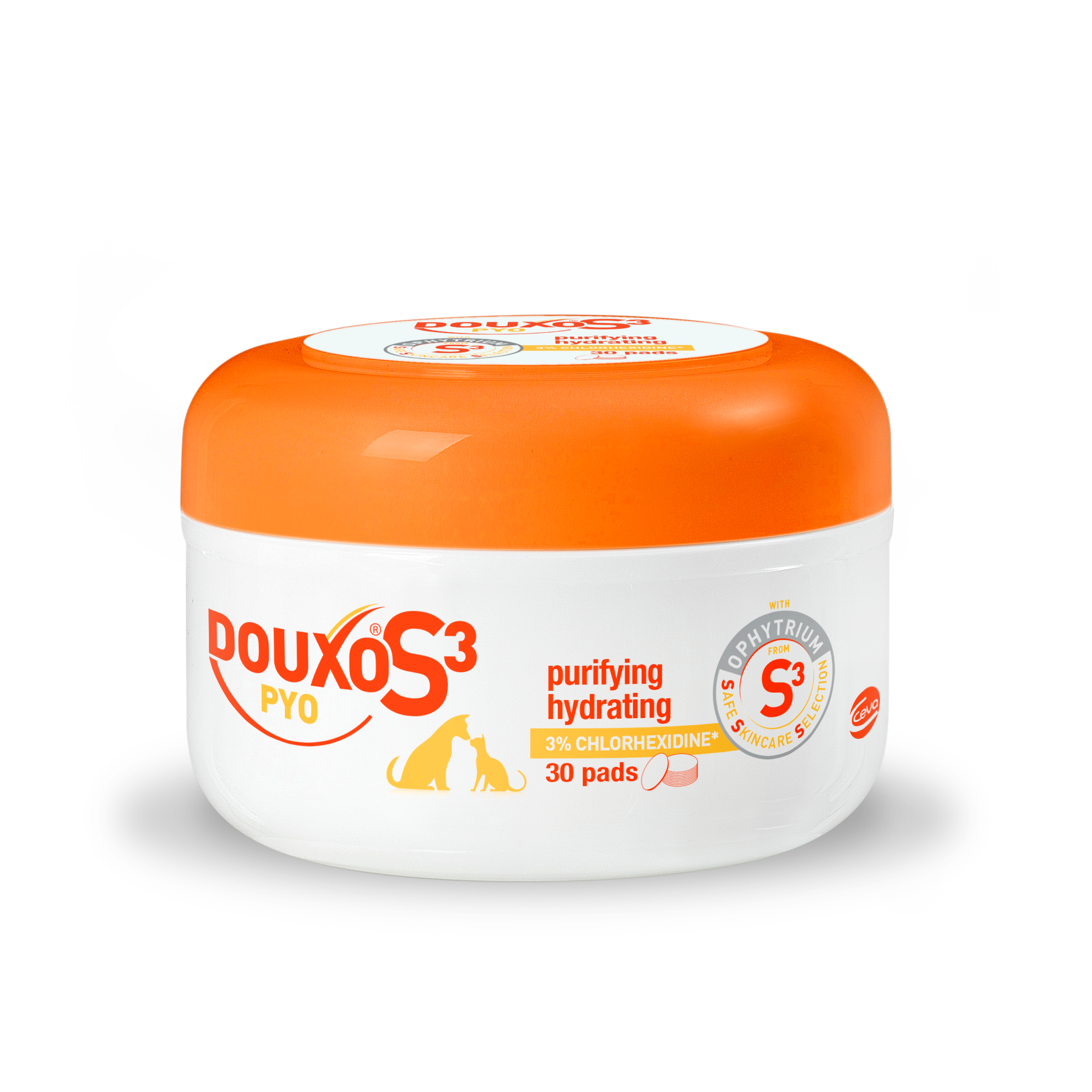Key Points
Why
What
How often
There are a number of lesions that can be suggestive of a skin infection. Most of the time apart from ringworm, what we see, and treat, is the secondary infection of self-inflicted lesions due to the cat scratching or licking excessively. It can lead to hair loss, crusts, raw skin, flaky skin or oily skin. Learn more about cat skin infections here. Identify the offender is crucial to manage in a proper way.
Why is it important to have a routine for infection tendencies?
There are several potential reasons why a cat might develop skin infections. It's essential to consult with a veterinarian to accurately diagnose and treat your cat's specific condition. By establishing a routine, it can considerably improve your cat’s quality of life and allow quick reaction if needed. Here are a few ways it can better their condition:
Controls the bacterial / yeast overgrowth: A several-week care with appropriate productscontaining antiseptic ingredients is effective in regulating germ overgrowth, ensuring a healthier skin environment for your cat.
Controls underlying causes/anticipates recurrences: In addition to antiseptic care, a targeted routine for your cat can manage triggers like allergies, depending on the underlying cause. Vigilant skin monitoring allows for early detection of issues requiring prompt medical attention.
Ensures comfort: Skin infections induce itching, redness, and irritation in cats. A routine for managing infection tendencies helps alleviate discomfort, ensuring your cat is comfortable and free from signs of distress.
Reinforces the bond: Regular grooming and care routines provide bonding opportunities with your cat. These interactions go beyond meeting physical needs, fostering a stronger emotional connection between you and your feline companion.
What to use for infection tendencies?
The approach to treating skin infections in cats depends on the causative agents, and diagnosis and treatment of underlying conditions are crucial to prevent relapses. Topical management is key in bacterial and yeast skin infections for three reasons:
1. Cleansing and Disinfection: Initiating treatment with pet-safe disinfectants, antiseptic solutions, or shampoos, such as DOUXO® S3 PYO Shampoo and Pads, removes inflammation products and debris, facilitating direct contact of topical products with affected areas to reduce germ count.
2. Local Application of Active Ingredients: Applying active ingredients locally provides faster relief to your cat's skin, particularly important in microbial overgrowth with itchy cats to break the itch-scratch cycle.
3. Nurturing and Rehydration: Essential for restoring skin integrity and protective function. DOUXO® S3 PYO products are formulated with hydrating agents to ensure proper skin hydration and Ophytrium contained in the products helps repair the damaged skin barrier.
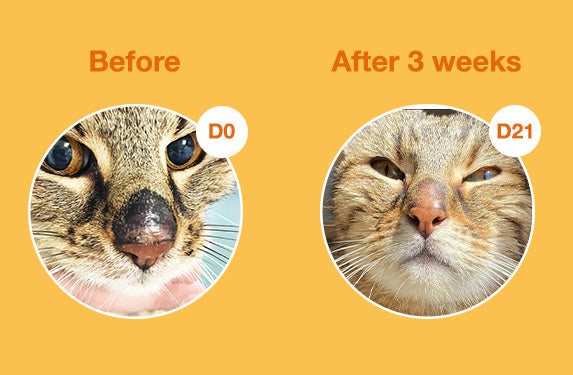
If topical products pose challenges, alternative antibiotics and antifungal medications can be suggested by your vet. Specific medications are needed for other fungi and parasites.
Ear mites can be prevented with spot-on formulations as part of regular parasite treatments, and when required, treatment involves ear cleaning and acaricidal drug application within and around the ear canal.
Always follow your vet's instructions when using antibiotics, antifungal drugs, and acaricidal drugs to prevent antimicrobial resistance. Depending on the infection type, treatment may be recommended for all pets in your household.
What can be a recommended routine for infection tendency?
DOUXO® S3 teams developed a specific care for germ overgrowth in cats. It involves one initial optional shampoo to remove crusts, and then daily DOUXO® S3 PYO Pads application for 2 to 3 weeks, until recovery. Beware not to stop application when the skin looks normal. Usually, continues 1 week more to ensure microbial recovery that is longer to achieve than clinical recovery.
This protocol has been clinically proven and recommended by vets throughout the world.
For long-term management, address the cause with the appropriate products. Your vet is your major ally in this.
To know more about how to apply the products, watch our dedicated videos:
We recommend

Find the right product for your pet
Take the quizLearn how to safely manage skin infections in cats with DOUXO® S3's expert routine. Explore common causes like allergies, parasites leading to and bacterial or yeast issues. Learn about the tailored topical treatment with DOUXO® S3 PYO line to effectively fight microbial overgrowth and break the itch-scratch cycle. Follow stress-free bathing tips for a positive experience to keep your cat skin nourished and hydrated. Effectively address microbial issues with DOUXO® S3's trusted solutions, ensuring your cat's health and well-being.





